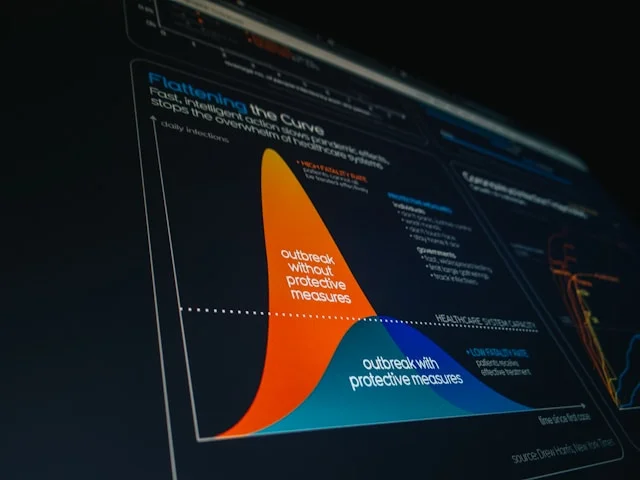In the age of abbreviations, acronyms like VM IOCMKT often surface in databases, software environments, or business intelligence platforms—confusing many who come across them for the first time. While this term isn’t widely recognized in mainstream technology or finance references, it is likely used in specific internal systems or enterprise tools, combining multiple concepts. In this article, we’ll explore the potential full form and meaning of VM IOCMKT, why acronyms like this are used, and how they may relate to current trends in IT, data management, and financial markets.
What Does VM IOCMKT Stand For?
As there’s no universal definition available, we can attempt to break down the term based on common industry practices:
- VM usually stands for:
- Virtual Machine in computing environments.
- Vendor Management in enterprise resource management.
- Virtual Machine in computing environments.
- IOCMKT could be an internal shorthand or system code, and likely represents:
- IO – Input/Output, commonly used in computer architecture.
- CMKT – Could refer to “Capital Market,” “Consumer Market,” or “Commodity Market.”
- IO – Input/Output, commonly used in computer architecture.
Putting this together, possible interpretations include:
- VM IOCMKT = Virtual Machine Input/Output Capital Market
- VM IOCMKT = Vendor Management Input/Output Consumer Market Tool
- VM IOCMKT = Virtual Machine I/O Commodity Market Tracker
While speculative, such interpretations suggest that VM IOCMKT may be related to systems that process data for financial markets using virtualized infrastructure.
Why Do Systems Use Such Acronyms?
In enterprise IT, ERP systems, or proprietary software, long names are often shortened for the sake of internal organization, database naming, or API requests. For example, a trading platform may use codes like IOCMKT to reference input/output operations related to market data.
Here are reasons such acronyms exist:
- System Efficiency: Reducing long command names or table references speeds up processing.
- Data Structuring: Acronyms allow developers to categorize and segment features or modules.
- Security and Obfuscation: Proprietary acronyms are less likely to be understood by unauthorized users.
- Consistency: Uniform naming makes it easier to scale and replicate modules across regions.
The Role of Virtual Machines (VM) in Finance and Data Systems
If we interpret VM as Virtual Machine, its relevance is clear in today’s digital landscape. Virtual machines are widely used across industries to manage computing resources efficiently.
Applications in the Financial Sector:
- High-Frequency Trading (HFT): VMs allow for quick deployment and testing of trading algorithms.
- Market Simulations: Virtual environments enable modeling of different market scenarios.
- Data Security: Isolated VMs are used to handle sensitive customer data with reduced risk.
The addition of IOCMKT suggests that the VM is handling some kind of market-related input/output operations, possibly involving data ingestion, analytics, or trade execution.
VM IOCMKT Full Form in Practical Use
When we try to understand the VM IOCMKT Full Form, it’s important to focus on how it could apply to different industries. In financial technology, it may refer to a Virtual Machine module used for input/output operations tied to capital or consumer market activities. Meanwhile, in enterprise environments, it could represent a vendor management tool that integrates real-time consumer market data and analytics for strategic decisions.
The exact definition might differ from company to company, but the core functionality often revolves around data movement, analysis, and decision-making support in a virtualized or automated system.
Understanding IOCMKT in Context
Assuming IOCMKT stands for Input/Output Capital Market Tracker or a similar term, it could be involved in any of the following activities:
- Real-Time Data Ingestion:
- Receiving and processing market data from exchanges.
- Monitoring price fluctuations or trading volumes.
- Receiving and processing market data from exchanges.
- Market Execution Systems:
- Executing buy/sell orders via APIs.
- Communicating with brokers or clearinghouses.
- Executing buy/sell orders via APIs.
- Reporting & Analytics:
- Analyzing historical market data.
- Generating financial models or risk assessments.
- Analyzing historical market data.
In modern fintech systems, platforms like Bloomberg Terminal, MetaTrader, or proprietary banking dashboards may use internal codes such as IOCMKT to denote specific data operations.
VM IOCMKT in Enterprise Software
For businesses outside of finance, the combination of VM + IOCMKT may still be relevant in areas such as:
1. Supply Chain and Vendor Management
If VM stands for Vendor Management, this could imply tools that manage suppliers and data flow in the consumer market (CMKT). Features may include:
- Vendor performance tracking.
- Product lifecycle analysis.
- Market trend integration with inventory data.
2. Business Intelligence Systems
- Organizations might track consumer behavior using input/output data in CMKT (Consumer Market).
- Predictive analytics engines could be coded with such acronyms to label datasets or modules.
Real-World Use Cases
Let’s take a look at possible practical examples where a term like VM IOCMKT could be relevant:
Example 1: Trading Platform Backend
A fintech company develops a backend service for processing stock trades using VMs to scale operations. The module responsible for trade data ingestion and distribution is labeled VM_IOCMKT, where:
- VM = Virtual Machine Node
- IOCMKT = Input/Output Capital Market Data
Example 2: ERP Dashboard for Retail Chains
A large retail brand uses an ERP system that includes Vendor Management (VM) modules integrated with real-time Consumer Market (CMKT) analytics. The component handling data syncing may be internally referred to as VM_IOCMKT.
How to Confirm the Meaning of VM IOCMKT?
If you’ve seen VM IOCMKT used in a specific software tool, dashboard, or codebase, the best way to confirm its meaning is by:
- Checking Internal Documentation – Look into the user manual or developer guide.
- Asking the System Admin or Developer – They can confirm module naming conventions.
- Inspecting the Context – Where is the term located? In a report? In source code? This can offer clues.
Final Thoughts
While VM IOCMKT doesn’t currently have a universally accepted full form, it appears to be a composite technical abbreviation used in niche environments such as financial software, enterprise resource planning (ERP), or IT system dashboards. It likely involves virtual machines or vendor management handling input/output operations in capital or consumer markets.
As technology systems become more complex, such acronyms will continue to emerge—representing specific functionalities or modules. For users, developers, or analysts, the key is to understand the context in which the term is used and consult relevant documentation.
Understanding these acronyms not only improves communication between departments but also ensures better system comprehension, troubleshooting, and development in the long run.



